The Cat Man’s art-and-ephemera collection goes public
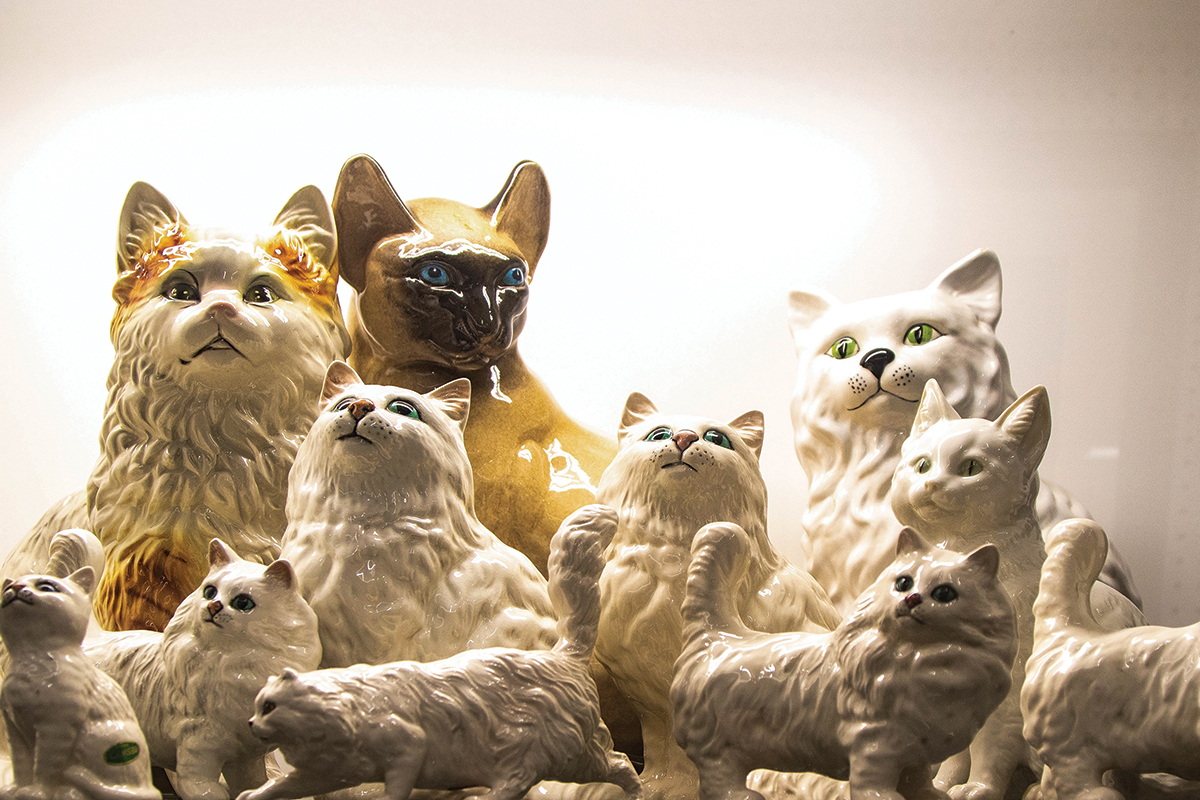
Photo by Clay Nations Photography
The American Museum of the House Cat is one man’s heartfelt tribute to the animal he adores — although all those who’ve ever handed their heart over to a cat will relish a visit. Dr. Harold Sims, aka “The Cat Man,” and his late wife Kay traveled all over the country sharing adventures during their six decades together. It was during these forays that they began collecting cats — not live ones, mind you (though the couple had plenty of those), but the inanimate kind, from porcelain to papier-mâché.
At 88, Sims has more energy than the average 25-year-old. Even though he didn’t grow up with pet cats in Upstate New York, where he spent his early childhood, he came to adopt cats as pets and cherish them. (He currently has three.)
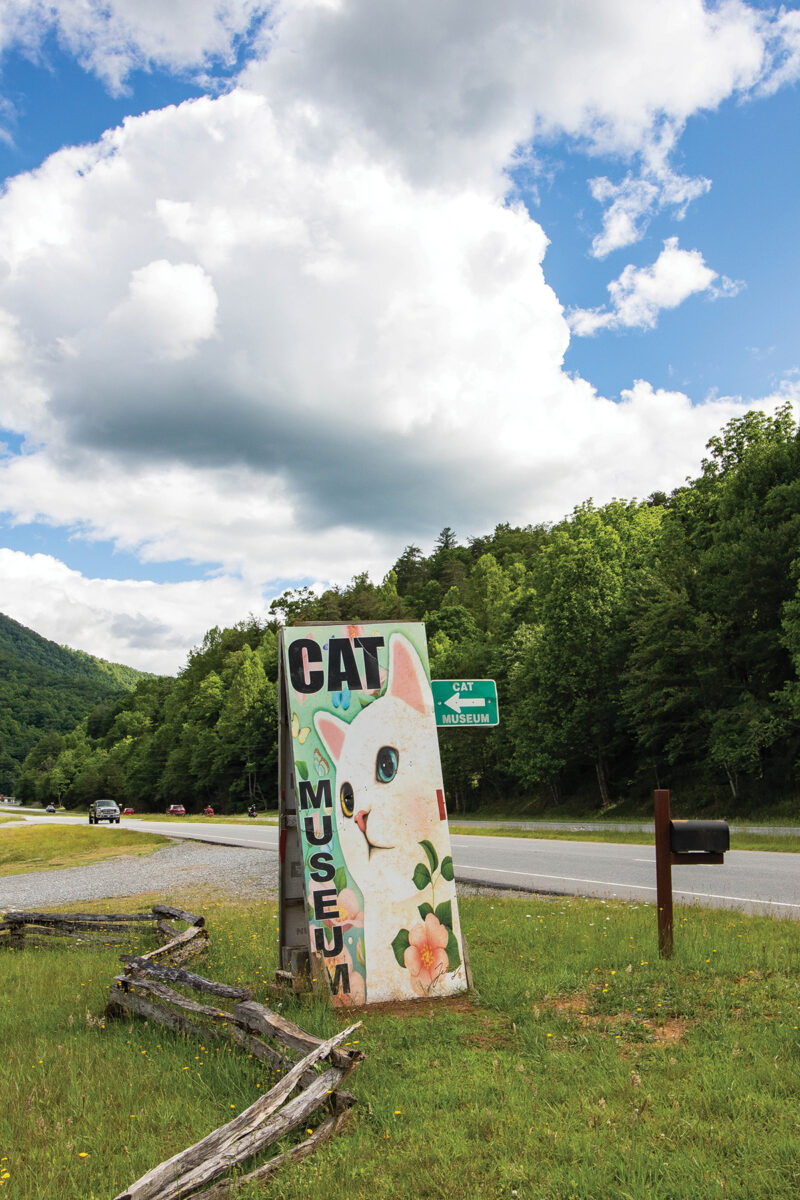
The first in his family to attend college, courtesy of the GI Bill, Sims worked for the Florida Department of Natural Resources as a marine biologist and later as a professor of biology and ecology for more than 20 years at St. Petersburg Junior College, also in Florida.
He and Kay retired to the Cashiers area in 1991. Sims’ life took an unexpected turn when he observed the many feral cats living in his area in dreadful conditions. Deeply distressed, he began caring for strays and eventually founded Catman2 Shelter, Western North Carolina’s first and largest no-kill, cage-free, cats-only rescue facility, located on 10 acres in rural Cullowhee and open by appointment.
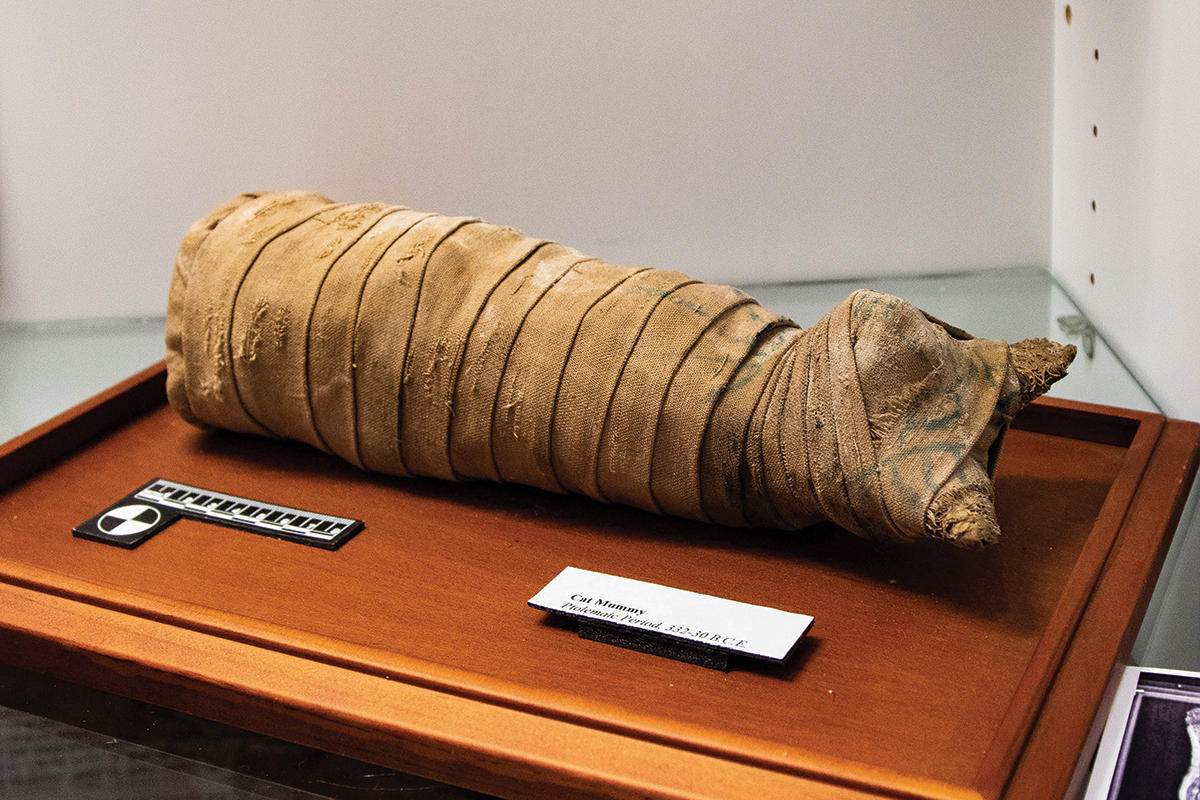
As for the vast collection of feline artifacts and ephemera that Sims acquired over the decades — objets d’art, books, Victrola records, and collectibles of all sorts — it’s now housed in the museum, an impossible-to-miss, 4,000-square-foot roadside attraction in Sylva. Shuttered for a period because of the COVID-19 pandemic, the venue reopened in the new, larger space this past spring.
Kaleb Lynch is the shelter director at Catman2 and has been pivotal as a support to Dr. Sims, especially after Kay’s death in 2021. Lynch started volunteering in 2010 and began working as the shelter manager in 2011, eventually assuming all the responsibilities of shelter operations — everything from fundraising, adoption coordination, and outreach to daily animal care and wildlife rehabilitation. (The shelter also houses a population of small mammals such as opossums and groundhogs.)
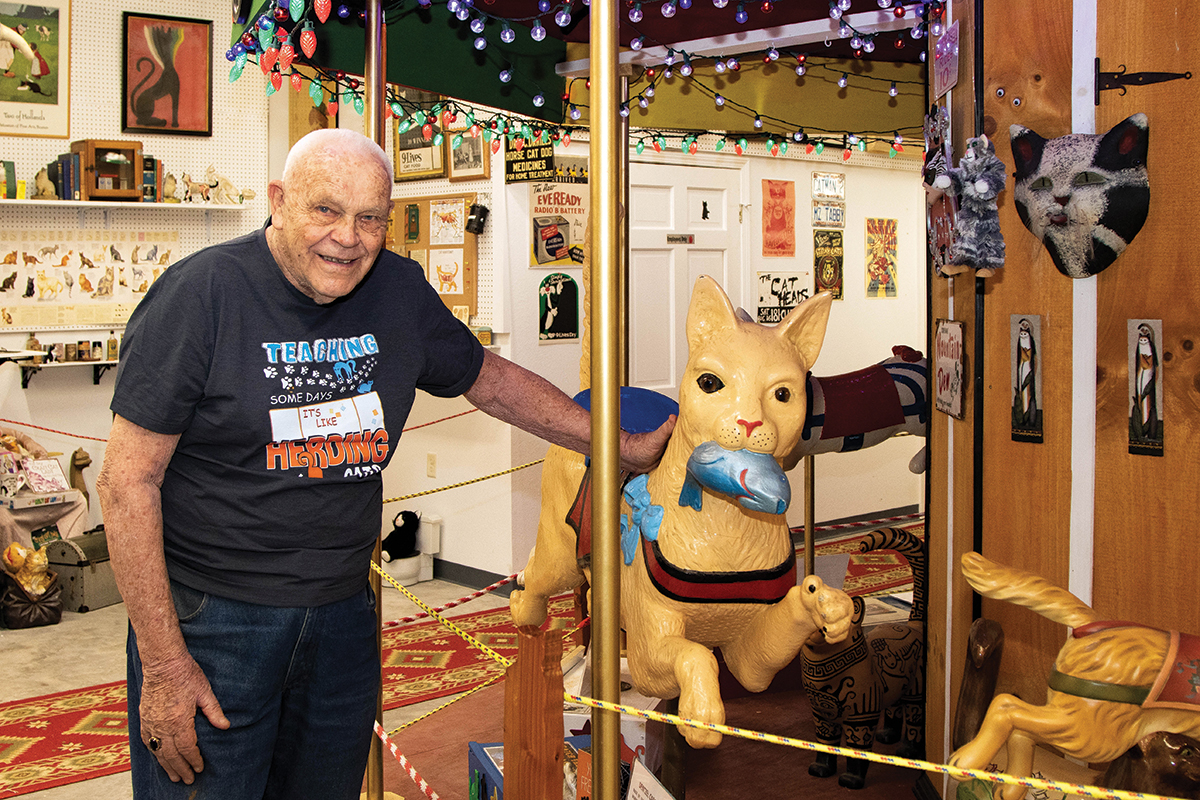
Photo by Clay Nations Photography
Given his long hours of hands-on care, Lynch jokes that he’s the “pool boy” of the cats, but gets serious in the next breath. “I believe wholeheartedly in the mission of Catman2 and appreciate Harold’s unwavering desire to help cats,” he says.
Sims’ museum pieces are not only eccentric and amusing, but also important. “These treasures teach people the history of the house cat,” notes Lynch. The third team member, Kimberly Crow, does marketing and social media for both orgs.
Upon entering the building, visitors travel back through millennia. The diverse artifacts include a sarcophagus that’s believed to be from ancient Egypt, a circa-1810 engraved copper collar, enchanting music boxes that play cat-themed tunes, print advertisements, instructional materials on cat care, and life-sized rideable carousel cats.
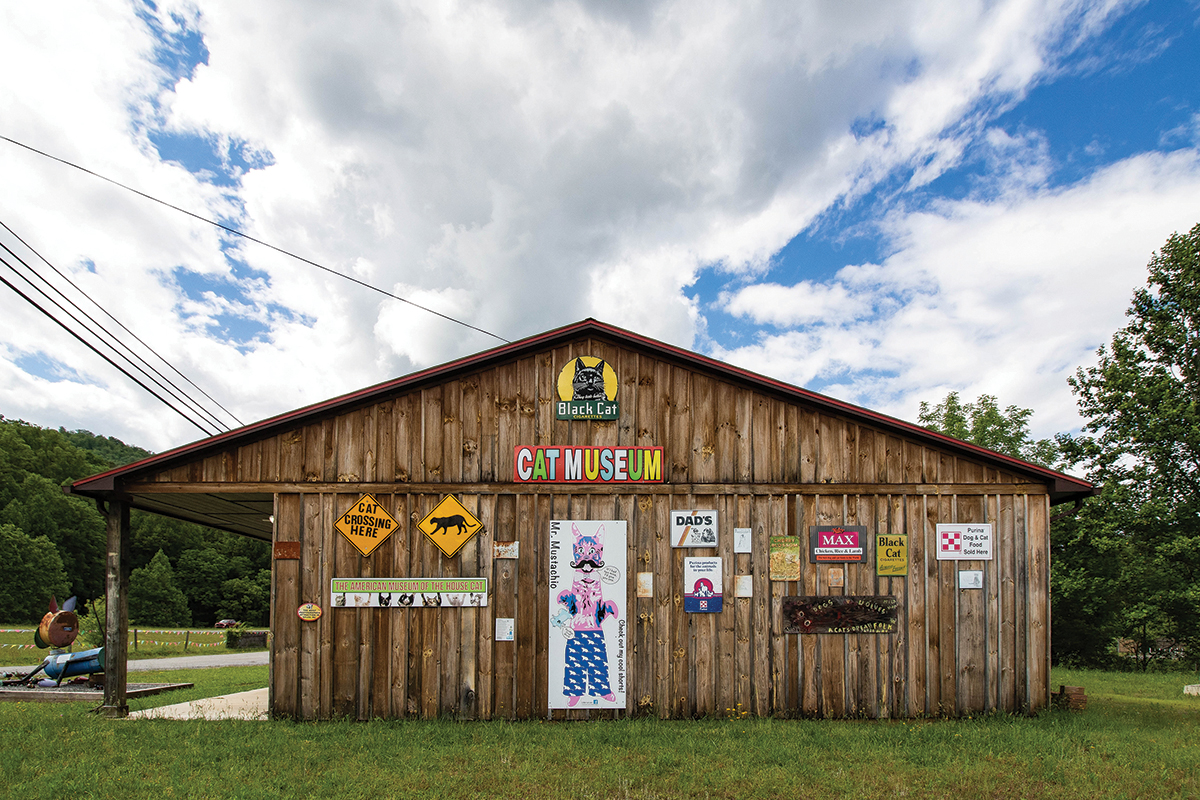
Rows of glass cases house retro windup toys — plush, wooden, and tin — that play musical instruments, chase mice, and bat balls. More modern robotic toys, nostalgically designed German beer steins, glass figurines — including particularly adorable Austrian singing cats — and an endless array of clocks, thimbles, and match holders are among the other displays. “I’ve scoured countless places to find these gems,” notes Sims — including antique shops, thrift stores, and eBay.
The museum’s fine-art portraits range from the whimsical and naïve to those obviously influenced by the great major and minor movements in visual art. Interpretations include impressionistic oils, nuanced watercolors, angular Deco-inspired pieces, a textural Picasso-esque abstract accented with bold primary colors, and even a Tramp Art-inspired cat fashioned from bottle caps.
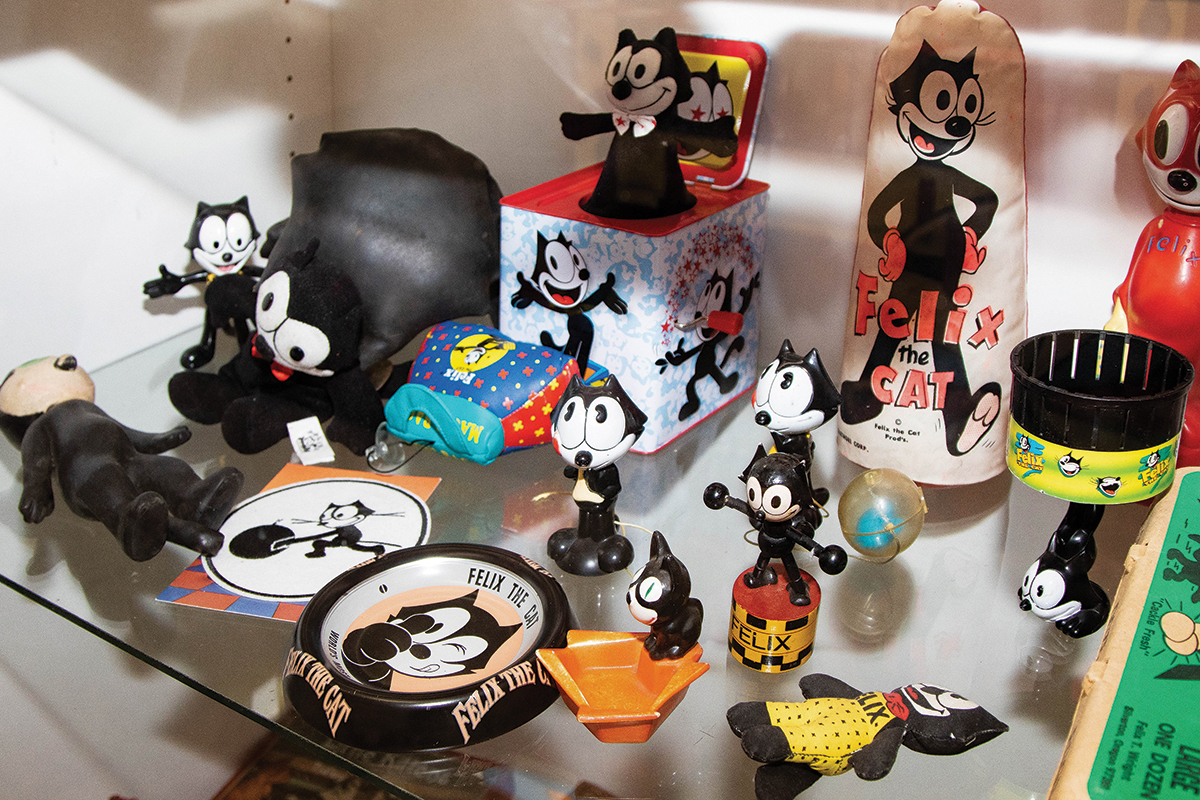
Another acquisition is a giant metal cat sculpture named Scooby Doo, part of a “Purr Pod” installation created by artist Paige Tashner at the Burning Man festival in Nevada. (It’s destined for a park in Sylva.)
Sims’ collection is complemented by self-authored children’s books with positive themes about inclusion and being a good friend. He also penned a coming-of-age novel, The Mystery of the Egyptian Mummified Kittens, with a feline protagonist.
His dedication to cats overrode more frivolous desires, including a long-dreamed-of Porsche, and he aims for his collection to be preserved far into the future.
“I want to make sure that these special pieces continue to benefit cat lovers after I’m gone. That’s why I urge people to support the museum — to ensure that it lasts,” he says.
The American Museum of the House Cat, 5063 US Hwy. 441 South, Sylva, 828-476-9376, wnccatmuseum.org, open Mondays, Thursdays, Fridays, and Saturdays from 10am-5pm and Sundays from 12-5pm (closed Tuesdays and Wednesdays). Tickets are $10/general, $5/kids 5-12 (under 5 free). Curated tours are available for $25/person by appointment. Also see catman2.org.
